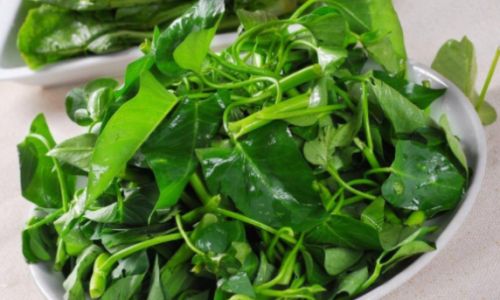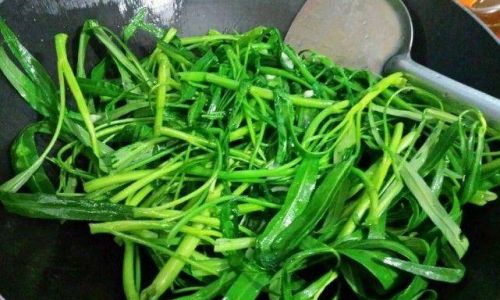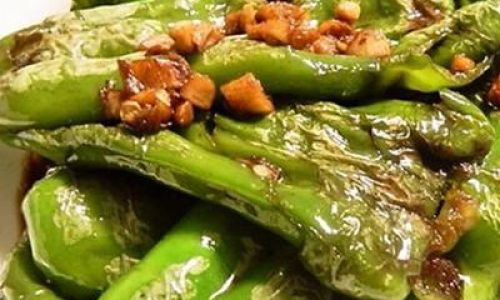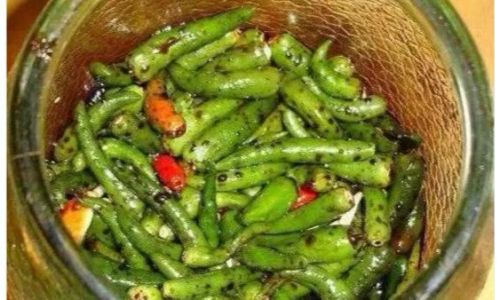Introduction

Water spinach, scientifically known as Ipomoea aquatica, is a popular leafy vegetable cherished for its tender texture, mild flavor, and rich nutritional content. Its versatility in cooking, from stir-fries to soups, makes it a staple in many cuisines worldwide. However, one common challenge faced by home cooks and professional chefs alike is the tendency of water spinach to turn black after preparation or cooking. This discoloration not only affects the aesthetic appeal of the dish but can also alter its taste and texture. In this comprehensive guide, we will explore the reasons behind water spinach turning black, various methods to prevent it, and practical tips for maintaining its vibrant green hue.
Understanding the Science Behind Discoloration
Before diving into prevention strategies, it’s crucial to understand the scientific reasons behind water spinach turning black. The primary cause of discoloration in water spinach is the oxidation of chlorophyll, the green pigment responsible for its color. Chlorophyll is highly susceptible to environmental factors such as exposure to air, temperature changes, and enzymatic reactions during and after harvesting.
-
Oxidation: When water spinach leaves are cut or bruised, cells are damaged, releasing enzymes and oxygen. This triggers a chemical reaction that breaks down chlorophyll, leading to browning or blackening.
-
Enzymatic Activity: Enzymes present in plant cells, particularly polyphenol oxidase (PPO) and peroxidase (POD), catalyze the formation of brown pigments when exposed to oxygen. This process is accelerated by heat, mechanical injury, and pH changes.
-
Temperature and Storage Conditions: High temperatures and improper storage can expedite the breakdown of chlorophyll and enhance enzymatic activity, leading to faster discoloration.
-
Mineral Content and Water Quality: The presence of certain minerals in irrigation water or soil can also contribute to discoloration. For instance, excessive iron or manganese can react with chlorophyll, causing it to degrade.
Prevention Strategies
To keep water spinach looking fresh and green, a multi-faceted approach is necessary. Here are some effective strategies to prevent it from turning black:
Prompt Harvesting and Handling
-
Harvest Timing: Harvest water spinach early in the morning when temperatures are cooler to minimize stress on the plant and reduce the likelihood of enzymatic activity.
-
Gentle Handling: Avoid rough handling during harvest to prevent bruising. Use sharp knives for cutting to minimize cell damage.
-
Immediate Cooling: Once harvested, quickly cool the water spinach to slow down enzymatic reactions. This can be done by immersing it in ice water or placing it in a refrigerator.
Proper Storage Conditions
-
Temperature Control: Store water spinach at a temperature between 1-4°C (34-39°F) to slow down the decomposition process. Avoid exposing it to temperatures above 10°C (50°F) as this accelerates chlorophyll degradation.
-
Humidity Management: Maintain high humidity levels to prevent moisture loss, which can lead to wilting and increased susceptibility to discoloration.
-
Packaging: Use perforated plastic bags or containers with damp paper towels to create a modified atmosphere that limits oxygen exposure while allowing for some gas exchange.
Blanching and Cooking Techniques
-
Blanching: Blanching is a crucial step in preserving the color of water spinach. Briefly immerse the leaves in boiling water (or steam) for about 30 seconds to 1 minute, then plunge them into ice water to stop the cooking process. This method inactivates enzymes responsible for discoloration and helps retain the green color.

-
Stir-Frying Quickly: When stir-frying, use high heat and cook the water spinach for just a few minutes. The high temperature seals in juices and minimizes exposure to oxygen.
-
Avoid Overcooking: Overcooking not only turns water spinach black but also makes it mushy. Cook until just tender to maintain its texture and color.
Acidulation and Seasoning
-
Acidic Environments: Adding a splash of vinegar, lemon juice, or tomato puree to cooking water or dishes can help maintain the green color of water spinach. Acids stabilize chlorophyll and slow down its degradation.
-
Seasoning Techniques: Use acidic ingredients like garlic, onions, and tomatoes sparingly as they can enhance flavors without compromising color.
Chemical Treatments (if Necessary)
-
Antioxidants: Commercial antioxidants like ascorbic acid (Vitamin C) or sodium metabisulfite can be used to treat water spinach before packaging or cooking. These chemicals neutralize free radicals and delay oxidation.
-
Calcium Chloride: A solution of calcium chloride can be sprayed on water spinach leaves shortly before harvest. Calcium ions bind to chlorophyll, stabilizing it and reducing the risk of discoloration.
Cultivar Selection and Agricultural Practices
-
Choosing the Right Cultivar: Some varieties of water spinach are inherently more resistant to discoloration. Consult local agricultural extension services or seed suppliers to select varieties that retain their color better.
-
Soil and Water Management: Ensure the soil is well-drained and has an optimal pH level. Use clean irrigation water and avoid over-fertilization, particularly with nitrogen, which can promote rapid growth but weaken the plant’s resistance to discoloration.
Practical Tips for Home Cooks
-
Preparation Techniques: When washing water spinach, do so gently in cold water to avoid damaging the leaves. Pat them dry with a clean cloth or paper towels before cooking.
-
Cookware Choice: Use non-reactive cookware made of stainless steel, enamel, or cast iron to avoid chemical reactions that can discolor the vegetable.
-
Serving and Storage: Serve water spinach immediately after cooking to prevent it from sitting out and oxidizing. If leftovers are inevitable, store them in airtight containers in the refrigerator and consume within a day.
Conclusion
Preventing water spinach from turning black requires a combination of careful handling, proper storage, and thoughtful cooking techniques. By understanding the science behind discoloration and implementing the strategies outlined in this guide, home cooks and professional chefs can ensure that their water spinach dishes remain vibrant, delicious, and visually appealing. Remember, the key to success lies in minimizing oxygen exposure, controlling temperature and humidity, and using acidic or antioxidant-rich ingredients to stabilize chlorophyll. With these practices in place, water spinach can retain its lush green color, enhancing the overall dining experience. Happy cooking!






0 comments